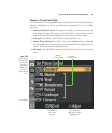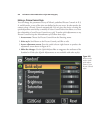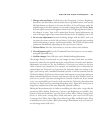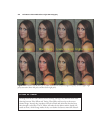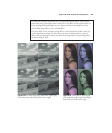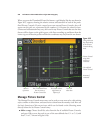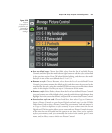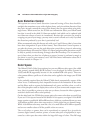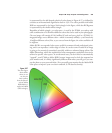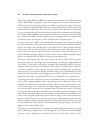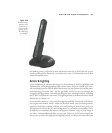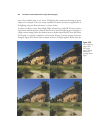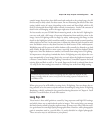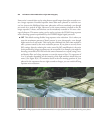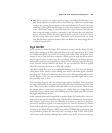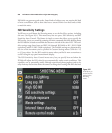
is represented by the odd-shaped splotch of color shown in Figure 8.27, as defined by
scientists at an international organization back in 1931. The colors possible with Adobe
RGB are represented by the larger, black triangle in the figure, while the sRGB gamut
is represented by the smaller white triangle.
Regardless of which triangle—or color space—is used by the D7000, you end up with
some combination of 16.8 million different colors that can be used in your photograph.
(No one image will contain all 16.8 million! If each and every pixel in a D7000’s 16-
megapixel image were a different color—which is extremely unlikely—you’d need only
16 million different colors.) But, as you can see from the figure, the colors available will
be different.
Adobe RGB is an expanded color space useful for commercial and professional print-
ing, and it can reproduce a wider range of colors. It can also come in useful if an image
is going to be extensively retouched, especially within an advanced image editor, like
Adobe Photoshop, which has sophisticated color management capabilities that can be
tailored to specific color spaces. As an advanced user, you don’t need to automatically
“upgrade” your D7000 to Adobe RGB, because images tend to look less saturated on
your monitor and, it is likely, significantly different from what you will get if you out-
put the photo to your personal inkjet. (You can profile your monitor for the Adobe RGB
color space to improve your on-screen rendition, as I’ll describe shortly.)
Chapter 8 ■ Setup: Playback and Shooting Menus 259
Figure 8.27
The outer figure
shows all the
colors we can
see; the two
inner outlines
show the bound-
aries of Adobe
RGB (black tri-
angle) and sRGB
(white triangle).



